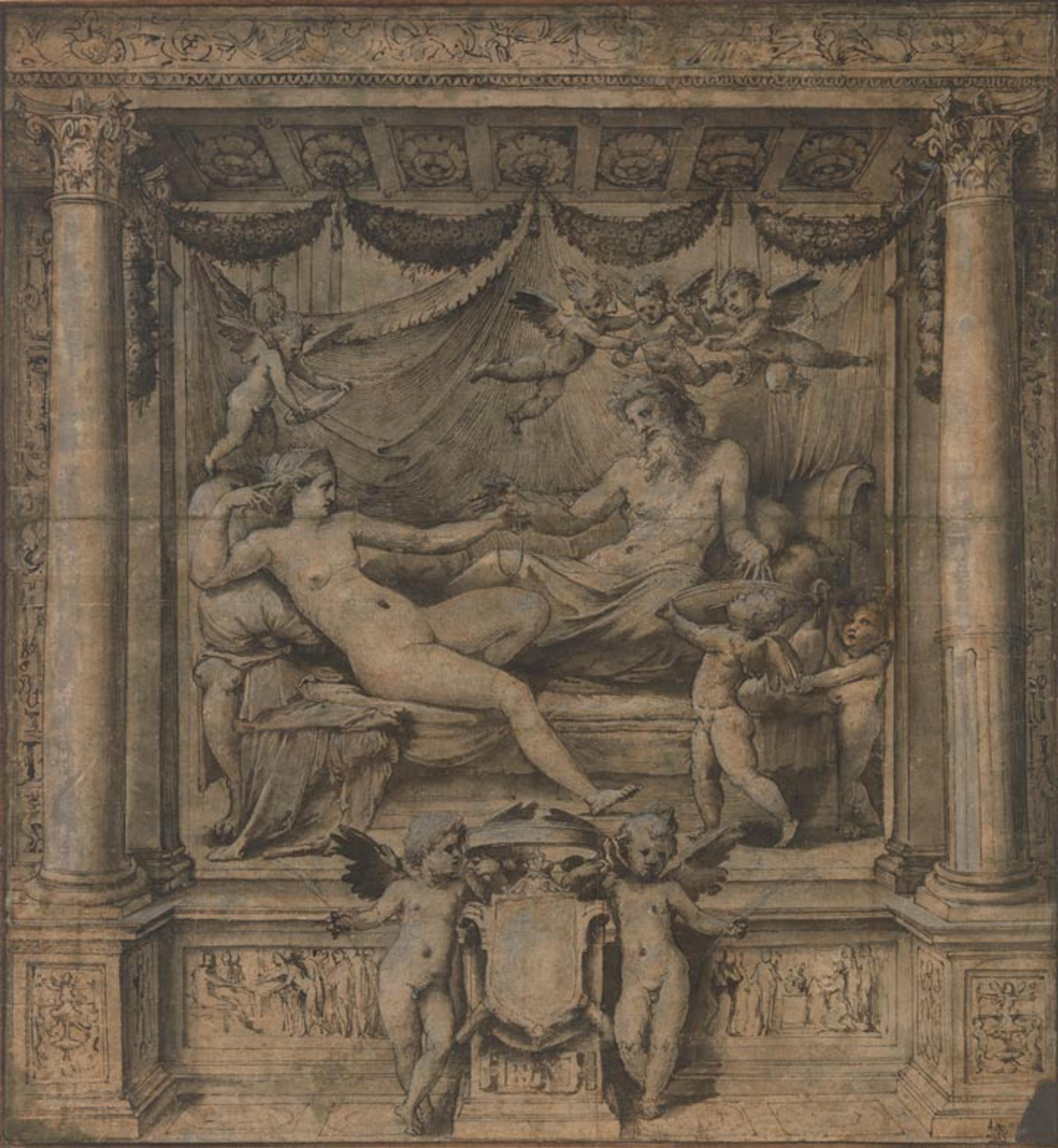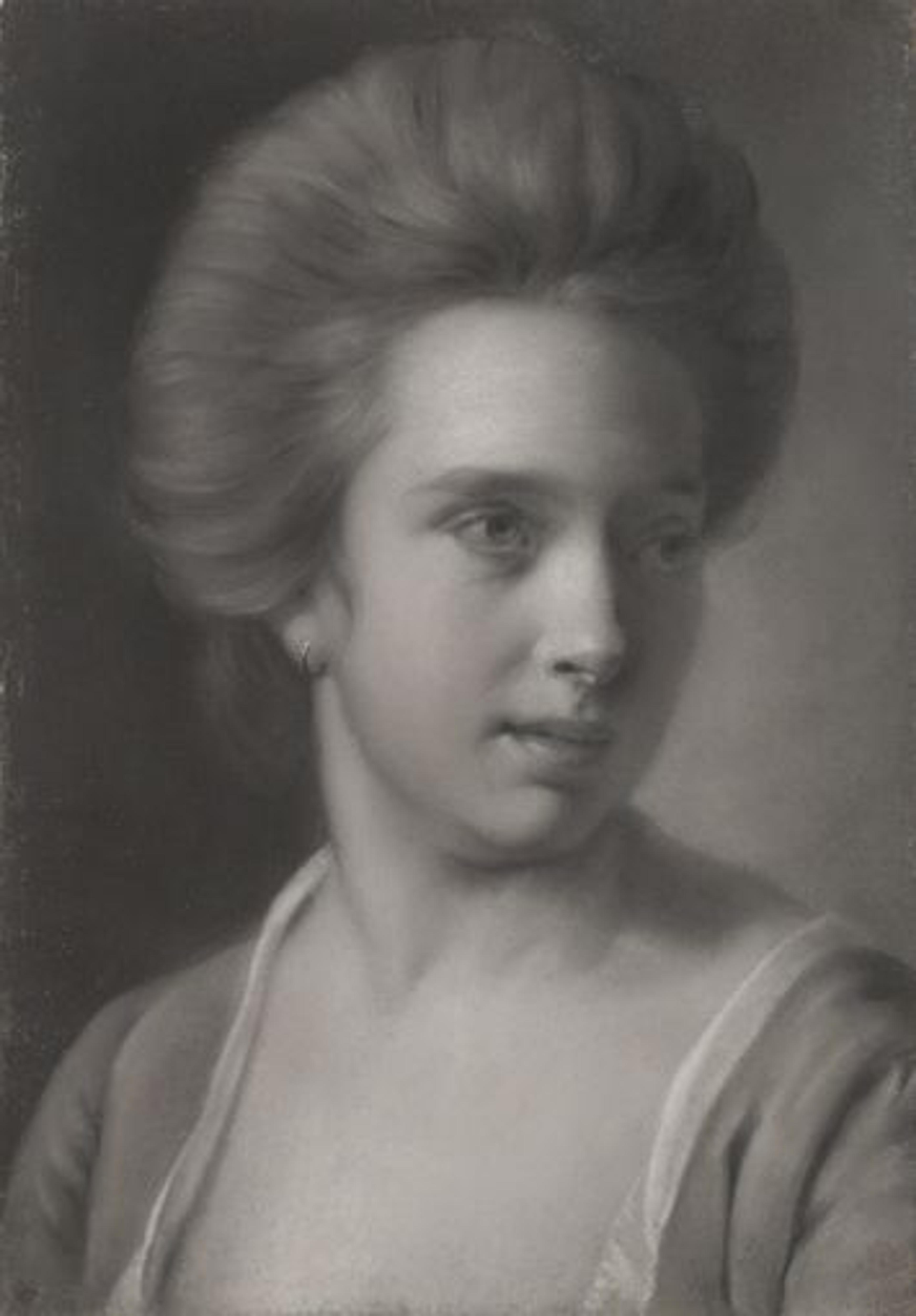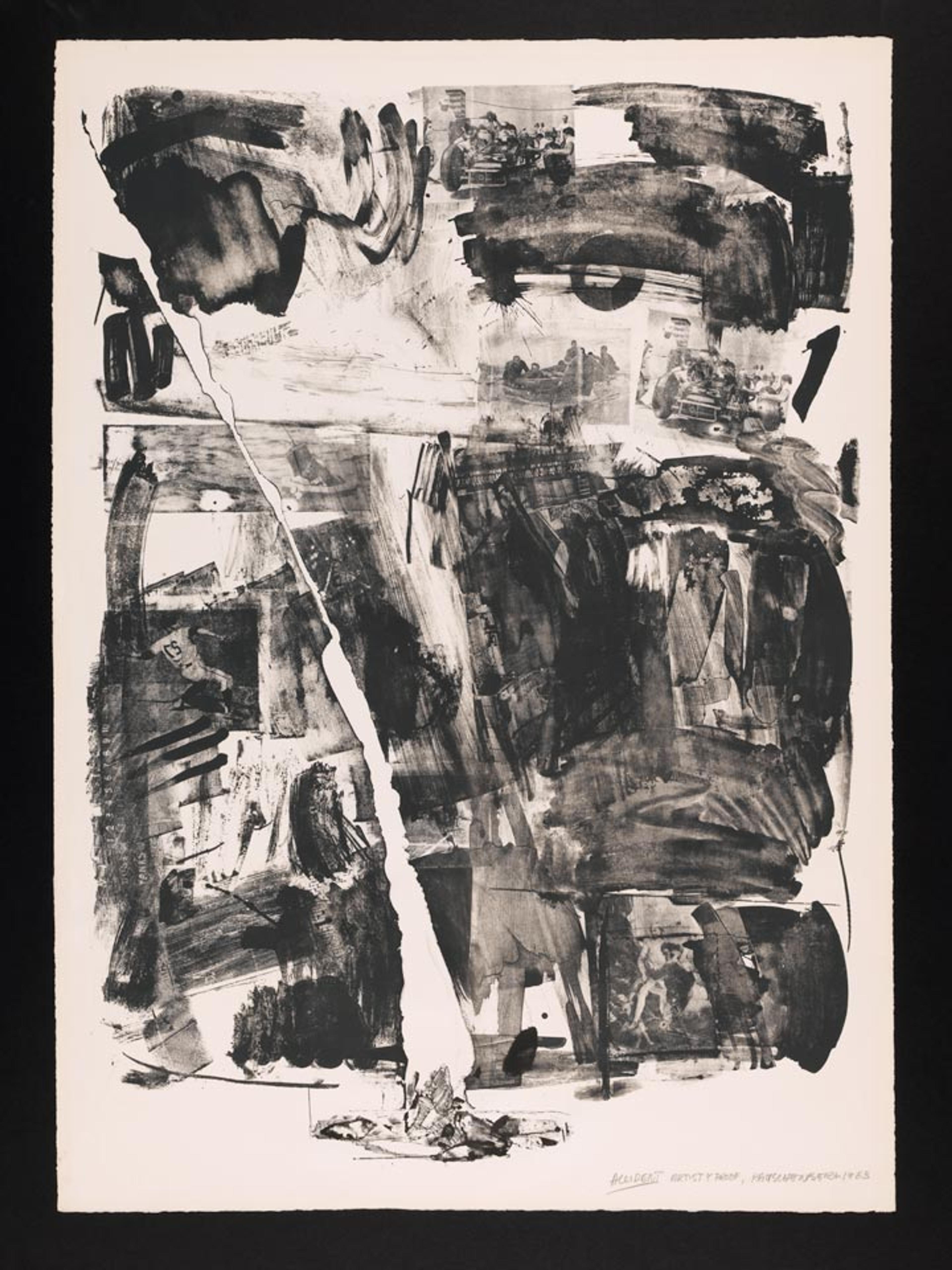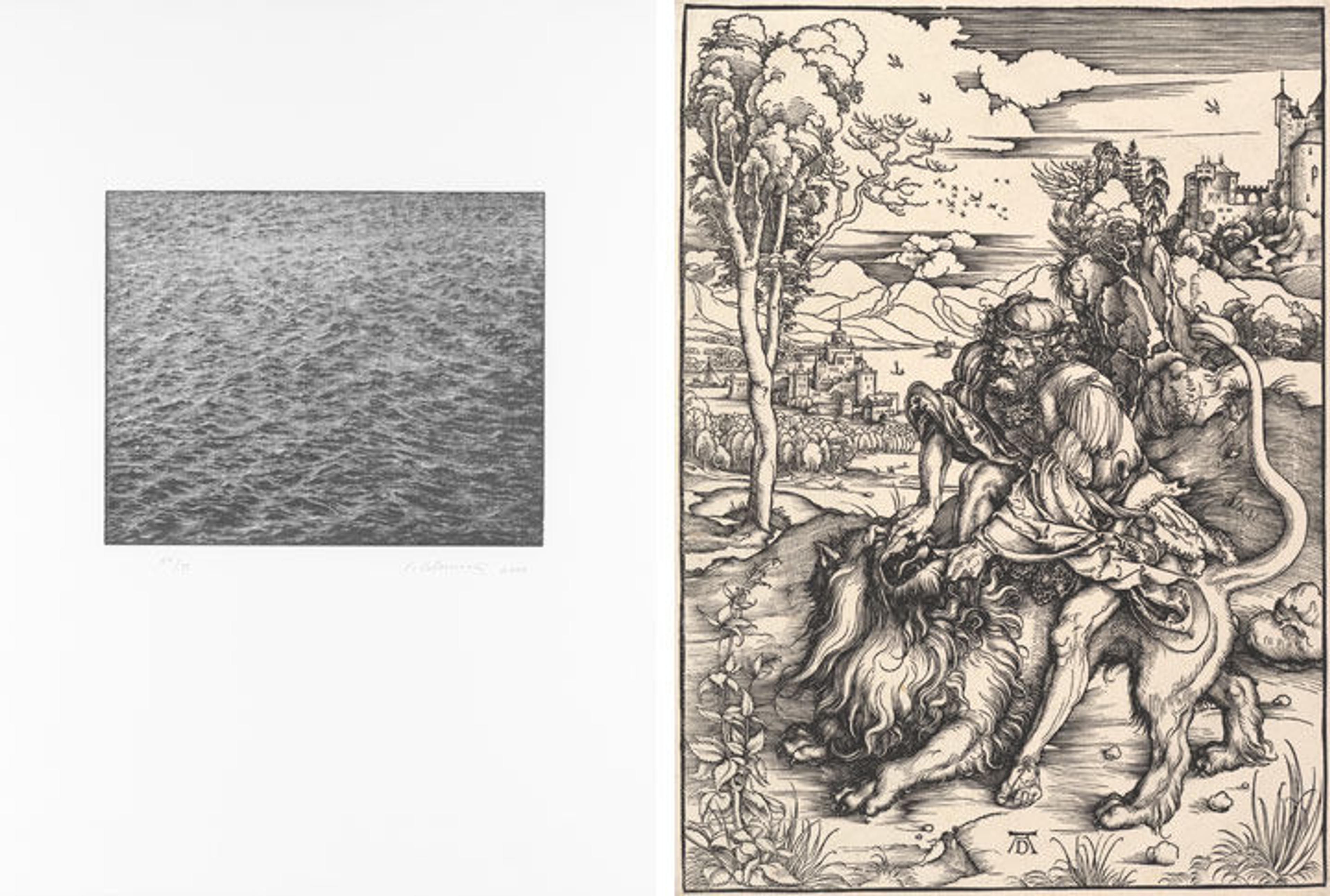Final Works of the Week Honoring 100 Years of Drawings and Prints at The Met

Perino del Vaga (Pietro Buonaccorsi) (Italian, 1501–1547). Jupiter and Juno: Study for the Furti di Giove Tapestries, ca. 1532–35. Pen and dark brown ink with brown and gray wash, highlighted with white gouache, Sheet: 17 x 15 3/4 in. (43.2 x 40 cm). The Metropolitan Museum of Art, New York, Purchase, Acquisitions Fund and Annette and Oscar de la Renta Gift, 2011 (2011.36)
«To celebrate the centenary of a museum department dedicated to works on paper, The Robert Wood Johnson, Jr. Gallery will feature one highlight per week from the collection of the Department of Drawings and Prints through April 30, 2017. Reflecting the remarkable breadth of the department's holdings, the rotating selection includes drawings and prints, as well as woodblocks, books, cut paper, and ephemera, ranging from the early 15th to the 21st century.»
On view through March 6, Perino del Vaga's Jupiter and Juno: Study for the Furti di Giove Tapestries (ca. 1532–35) depicts two Roman gods reclining on their marriage bed. This monumental study was used for one of the panels in a lavish set of tapestries, now lost, depicting the clandestine erotic adventures of Jupiter. The artist envisioned the amorous composition—a presentation piece to show the patron—as if seen through a window, complete with illusionistic framing elements.
Left: Joseph Wright (Wright of Derby) (British, 1734–1797. Portrait of a Woman, Her Head Turned to the Right, Wearing an Earring, ca. 1770–72. Pastel on blue laid paper, Sheet: 15 7/8 x 11 in. (40.3 x 28 cm). The Metropolitan Museum of Art, New York, Rogers Fund, 2007 (2007.40)

Wright of Derby's Portrait of a Woman, Her Head Turned to the Right, Wearing an Earring (ca. 1770–72) is a highly finished drawing that belongs to a group of about a dozen head studies in pastel or chalk executed in the years before 1773, when Wright departed the English Midlands to study in Italy. Although the work demonstrates a masterful ability to capture a likeness, it has not been related to a portrait commission. The informality of the sitter's open-necked gown, her sharply turned head, and her averted gaze suggest that she is a character type, for which a close friend or family member was the model. The drawing will be on view from March 7 through March 13.

Robert Rauschenberg (American, 1925–2008). Accident, 1963. Lithograph, Sheet: 41 x 29 in. (104.1 x 73.7 cm). The Metropolitan Museum of Art, New York, Bequest of William S. Lieberman, 2005 (2007.49.594). © Robert Rauschenberg Foundation
From March 14 through March 20 you'll have the chance to view Robert Rauschenberg's lithograph Accident (1963). Rauschenberg's compositions have been described as having "a flatbed picture plane," rather than evoking an illusionistic space. Across the surface of Accident, the artist assembled multiple images culled from both fine art and everyday life, including a reproduction of a painting by Giovanni Battista Tiepolo and photographs of a baseball player taken from a discarded New York Times printing plate.

Adolph von Menzel (German, 1815–1905). The Choirstalls in the Mainz Cathedral, 1869. Watercolor and gouache (with gum arabic), framing line in graphite, Sheet: 8 7/8 x 11 3/8 in. (22.6 x 28.9 cm). The Metropolitan Museum of Art, New York, Purchase, 2006 Benefit Fund, 2007 (2007.169)
Adolph von Menzel was one of the most prolific European draftsmen of the 19th century. His avid interest in 18th-century German art and architecture is well represented in his drawings of German Baroque and Rococo churches. In this masterful watercolor and gouache drawing of the west choir of Mainz Cathedral, the Rococo choir stalls by Viennese sculptor Franz Anton Hermann dominate the composition. The Choirstalls in the Mainz Cathedral (1869) will be on view from March 21 through 27.
Right: Gerard David (Netherlandish, ca. 1455–1523). Studies of Ten (?) Heads and Two Ears, ca. 1498. Metalpoint on prepared paper, Sheet: 5 1/4 x 3 3/4 in. (13.3 x 9.5 cm). The Metropolitan Museum of Art, New York, Purchase, Lila Acheson Wallace Gift, 2008 (2008.368a, b)

From March 28 through April 3, a rare sheet containing some of Gerard David's lively figural studies (ca. 1498) will be installed in the gallery. David was one of the last great early Netherlandish painters, and his studies were acquired as part of an effort to strengthen The Met's collection of Northern European drawings. While none of the specific heads or figures depicted appear in David's paintings, this type of sketching exercise allowed the artist to imbue his painted figures with a striking realism and profound humanity.
Left: Karl Schmidt-Rottluff (German, 1884–1976). Girl with Vase of Flowers (Mädchen mit Blumenvase), 1911. Woodcut, Sheet: 16 1/4 x 11 in. (41.3 x 27.9 cm); Block (irregular block size): 12 3/4 x 8 in. (32.4 x 20.3 cm). The Metropolitan Museum of Art, New York, Janet Lee Kadesky Ruttenberg Fund, in honor of Colta Ives, 2006 (2006.581). © 2017 Artists Rights Society (ARS), New York

Karl Schmidt-Rottluff co-founded the art group Die Brücke (The Bridge) in 1905. Woodcuts were central to the group's practice, as they allowed the artists to create rough, "primitive" works seemingly freed from fine-art conventions. In Girl with Vase of Flowers (1911), the artist engages with the traditional female nude in an unconventional manner by rendering the figure's body with angular lines and simplified forms. Her masklike visage reflects the influence of African and Oceanic art that Schmidt-Rottluff studied at the Dresden Ethnographic Museum. This print, as well as its woodblock, will be on view from April 4 through 10.
For one week beginning April 11, Vitruvius's De Architectura will be on view. This comprehensive text devoted to the art of building was made widely accessible through translated and illustrated editions printed during the Renaissance. Vitruvius's work became a point of reference for artists and architects who wished to apply antique principles to their modern constructions. This 1556 copy is a unique example of collaboration within the architectural genre as it was illustrated by the well-known architect Andrea Palladio and owned by his direct successor, the architect Vincenzo Scamozzi.

Left: Vija Celmins (American, born Riga, Latvia, 1938). Ocean Surface Wood Engraving 2000, 2000. Wood engraving, Sheet: 20 3/4 x 17 1/4 in. (52.7 x 43.8 cm); Plate: 8 1/4 x 10 1/4 in. (21 x 26 cm). The Metropolitan Museum of Art, New York, Purchase, Catherine Woodard and Nelson Blitz Jr. Gift, in honor of their daughters, Perri and Allison Blitz, 2002 (2002.127). Right: Albrecht Dürer (German, 1471–1528). Samson Rending the Lion, ca. 1497–98. Woodcut, Sheet: 16 x 11 7/8 in. (40.6 x 30.2 cm). The Metropolitan Museum of Art, New York, Gift of Georgiana W. Sargent, in memory of John Osborne Sargent, 1924 (24.63.111)
Ocean Surface Wood Engraving 2000 (2000) is one of the many depictions of the ocean surface Vija Celmins has made since 1968, all of which are derived from photographs of the Pacific that Celmins took while living in California. The artist crops her images so that gentle waves fill the entire picture plane and eliminate indications of the shore and sky. Celmins used an engraving tool to carve the woodblock shown here, and while the process took several years, the tiny dashes and marks in the image evoke a space where "stillness and movement, flatness and depth, are held together in a delicate balance." This print and its corresponding woodblock will be on view from April 18 through 24.
Albrecht Dürer's magnificent woodcut and woodblock Samson Rending the Lion (ca.1497–98) will be on view for one week beginning April 25. Samson, the last of the Old Testament Judges of Israel, is shown as a vigorous young man slaying the lion with his bare hands. While the subject's mingling of classical and biblical iconographical traditions would have appealed to Dürer's circle of humanist patrons, it is the artist's unprecedented level of technical virtuosity that continues to captivate audiences. Dürer achieved remarkable tonal shifts in the woodcut, such as in the lion's mane, which are all the more amazing considering that each tapered black line was formed by chipping away wood on either side of the intended line.
This concludes our yearlong Work of the Week celebration. We hope you have enjoyed viewing these highlights from the collection!
Related Link
Picturing Math: Selections from the Department of Drawings and Prints, on view at The Met Fifth Avenue through May 8, 2017
Allison Rudnick
Associate Curator Allison Rudnick manages the Study Room for Drawings and Prints and oversees the ephemera collection. She joined the department as a research assistant in 2012 and has held positions at the print shop Harlan & Weaver and the Whitney Museum of American Art. Active in the field of contemporary printmaking, she is a frequent contributor to Art in Print and serves as treasurer for the Association of Print Scholars. She holds a BA from Connecticut College and an MPhil from the Graduate Center of the City University of New York, where she is a PhD candidate.
Angela Pastorelli-Sosa
Angela Pastorelli-Sosa was formerly a Lifchez-Stronach curatorial intern in the Department of Drawings and Prints.